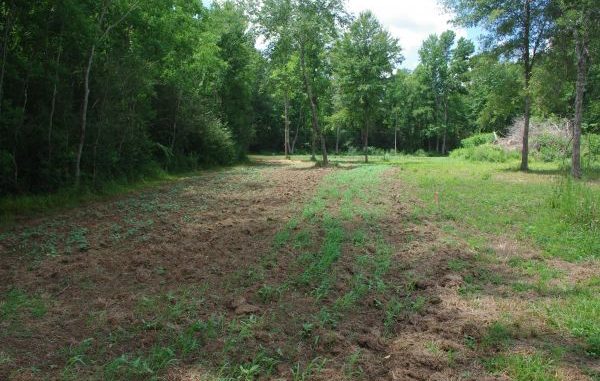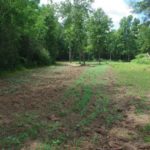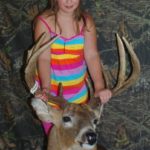
When I went to work for the Department of Wildlife and Fisheries way back in 1976, the late Dewey Wills was assistant chief of the Game Division (now the Wildlife Division). Dewey was responsible for the land purchasing program for the department and was involved with the purchase of many of the wildlife management areas that we are so familiar with.
In fact, because of his work and dedication to wildlife, the name of the Saline WMA was changed to Dewey W. Wills Wildlife Management Area to honor his service to the state.
Dewey was one of my early mentors, and he would frequently ask the question, “What have you done for wildlife today?”
Dewey made such an impression on folks that this question is still asked today at the office, and is one that we who hunt should continue to ask of ourselves.
In today’s world and its what’s-in-it-for-me attitude, we need to be sure we are giving back to the resource and not just taking.
Last month, I wrote that it is time to be doing the necessary habitat work for the wildlife. While the soil moisture was good for the first part of May, rains needed for plant growth were lacking the last two weeks of the month, and I was beginning to think that my efforts were going to dry up in the field.
Fortunately rain came in early June, and I am optimistic that by the beginning of July I will have sunflowers blooming, millet and sorghum beginning to produce seed heads and will see a few deer feeding on cowpeas, jointvetch, bundle flower and partridge pea.
If wildlife plantings are part of your management plan, hopefully you too took advantage of the rain and subsequent soil moisture and put some seed in the ground.
The rain also ensured that my clover patches would continue providing forage for deer for a few more weeks. My plan, if the jointvetch, partridge pea and bundle flower become established, is to simply maintain these sites for a few years by allowing them to flower and seed out each fall fall. I will not be plowing these strips up next spring, but will simply clip and fertilize them and hope these legume plants regenerate. I had one strip of jointvetch that I planted last spring regenerate this year, so it does work.
I have not seen any turkey poults yet, but the turkey hatch should be under way. I have some cameras out at dusting sites and fields to document the hatch.
There are a lot of insects available right now in the fields (the cricket hatch appears to be a boom), so there is food available for the young birds. The strips of sunflowers and millet will provide food and cover for the birds this fall, in addition to providing us with some dove-hunting opportunities.
Planting strips at different times throughout the summer will provide birds with food during the fall and winter months, as well as providing some late-season dove hunting.
There was some bad news for the public land hunters who hunt on Ben’s Creek WMA. LDWF and land owner Weyerhaeuser Corporation could not come to terms on the lease agreement, and that lease will not be renewed. This means that the area will drop out from the WMA system and those hunters will have to find another WMA to hunt on.
The same fate could happen to the Jackson-Bienville WMA if these two entities cannot work out an agreement. What a loss this would be for the state’s hunters: Jackson-Bienville is one of the original game management areas, and many a deer hunter has cut his teeth on this property.
In talking with Scott Durham, the state deer biologist for LDWF, the deer kill for last season might be the lowest-documented yet. Is the deer herd in this state declining as the harvest figures appear to indicate? Or perhaps hunters are simply holding back from squeezing the trigger.
I spoke to a man who sits on a deer paradise who saw 26 deer on his first hunt and chose not to shoot. He only made a couple of more hunts and never killed a deer.
On the other hand, I talked with an elderly couple from my old stomping grounds of North Louisiana who had killed nine deer between them. She had killed five with her .30-06, including a 6-point, an 8-point and a 10-point.
It is hard to say what is going on with the deer kill. No doubt habitat conditions, particularly in the piney woods, have changed in the past 20 years. And this habitat is no longer as productive as it was when logging was a common occurrence.
With the depressed housing market and the low demand for building lumber, many timber tracts that need to be cut are just standing. As timber grows older, the canopy closes and plant growth used by deer for food declines.
Reproduction declines, as does antler growth and development. Escape cover also declines, and the big talk at the deer seminars is about coyote predation. Perhaps this is an issue on some areas.
At Camp David, I have photographed a coyote and a yearling buck at a bait site for several weeks, and I am still getting regular photographs of the young spike buck, so I am not sure we can put all the blame on the coyotes.
I believe many hunters are like the man I first mentioned and are simply choosing to look and not pull the trigger as they would have 20 years ago. If that buck of a lifetime appears, then they will shoot; but many are simply electing to look and enjoy the outing.
One thing is apparent, this state is producing both quality and trophy bucks.
A QDMA scoring event was held in Marksville the first weekend of June, and LDWF’s Tony Vidrine measured a 165 6/8-inch typical buck young Ivy Gagnard killed on Jan. 14 in Avoyelles Parish. This is one of those trophy deer that had not been officially scored, and Ivy has a buck that qualifies for the state record list and the Boone and Crockett Three Year Awards Program.
The buck had 11 points and a 19 3/8-inch inside spread.
Her grandpa, Greg Gagnard, has killed some trophy deer himself, but it was evident he was very proud of Ivy and her great deer.
I made a minor miscalculation on the non-typical buck that Tadple McLeod killed last season, and the official score on this buck is now 206 5/8 inches and it will be listed in the Pope and Young all-time record book.
At the QDMA event, the Jager Pro group gave a demonstration on their new hog trap design, and they also gave a talk about their hog eradication services. These are former military professionals who take their job serious and pretty much take a battlefield approach to the hog problem.
My hog eradication program continues at Camp David, not on the intense level as Jager Pro, but the hogs are finally showing up at some of the bait sites. It is time to develop the plan of attack. Hog eradication is something that we all can do that will allow us to have a ready answer about what we are doing for wildlife today.




